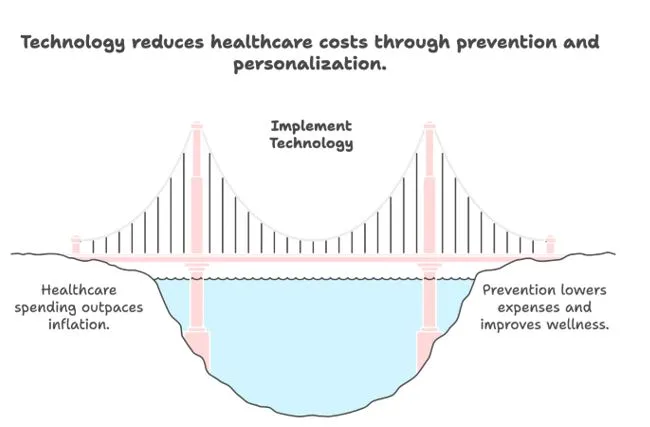How Technology Can Reduce Healthcare Costs
1. Introduction
Healthcare costs keep climbing, putting pressure on both individuals and employers. Businesses face higher insurance premiums every year, while employees struggle with out-of-pocket expenses that often delay treatment. The result is a system under strain, one that needs a smarter, more efficient approach.
That’s where technology comes in. From AI diagnostics to wearable devices and digital rehab tools, innovation is changing how we approach healthcare. Many now ask, how can technology reduce healthcare costs? The answer lies in prevention, personalization, and smarter data use.
2. The Reality of Rising Healthcare Costs
Global healthcare spending has been rising faster than inflation for years. According to WHO and Statista, total healthcare costs could reach $13 trillion globally by 2030. For employers, this means expensive benefit plans and growing financial pressure.
Employees feel it too. High deductibles and medical bills often push people to skip checkups or delay care, which leads to bigger problems down the line. That’s why reducing employee healthcare costs has become a key focus for forward-thinking companies.
3. The Role of Technology in Cutting Costs
AI in Diagnostics and Treatment
Artificial intelligence can now analyze medical images and test results with remarkable accuracy. This allows doctors to detect diseases earlier and reduce unnecessary procedures. Early detection saves both lives and money by preventing hospitalizations and complications.
Telehealth
Telehealth became mainstream during the pandemic and continues to be one of the most effective ways to cut costs. Virtual visits are faster, cheaper, and more convenient than in-person appointments. They also reduce emergency room visits and absenteeism.
Wearables and Remote Monitoring
Wearable tech isn’t just about counting steps anymore. Modern health trackers monitor heart rate, oxygen levels, sleep quality, and stress. This real-time data helps people spot issues early and make changes before they become serious medical problems.
Digital Physical Therapy Platforms
Rehabilitation technology is another powerful cost-saver. Digital physical therapy platforms like Athlix help users prevent injuries and recover smarter with intelligent image analysis, medical exam interpretation, and personalized chat-based physiotherapist guidance. These tools combine human expertise with AI insights to reduce clinic visits, speed up recovery, and prevent reinjury, saving time and money for both patients and employers.
4. Wellness Programs That Actually Work
The best way to cut healthcare costs is to avoid illness in the first place. Wellness programs reduce healthcare costs by shifting focus from treatment to prevention.
Modern corporate wellness initiatives use digital tools to track activity, promote nutrition education, and identify risks early. When employees move more, sleep better, and manage stress, healthcare claims go down.
A Harvard Business Review analysis found that for every $1 invested in wellness programs, companies save about $3 in healthcare costs. That’s not just a statistic, it’s a strong business case for prevention.
5. Data and Prevention: The Long-Term Game
Technology gives healthcare providers and companies access to anonymized data that reveals health patterns before they become costly issues. Predictive analytics can identify employees at higher risk of injury, stress-related illness, or chronic disease.
By acting early, employers can prevent expensive treatments later. This proactive approach doesn’t just lower costs, it creates healthier, more engaged teams.
6. Practical Tips for Businesses
Here’s how organizations can start using technology to reduce healthcare costs right now:
- Add Telehealth to Benefits: Encourage employees to use virtual consultations for non-emergency care.
- Promote Activity and Tracking: Step challenges or wearable incentives keep employees engaged and moving.
- Leverage AI-Powered Recovery: Partner with platforms that offer smart recovery and performance tracking solutions to keep teams healthy and active year-round.
- Invest in Education: Teach employees how early prevention and digital care tools can help them avoid long-term health issues.
These steps cut unnecessary spending and build a workplace culture that values wellbeing as much as performance.
7. Final Thoughts
Technology isn’t replacing doctors or physiotherapists, it’s helping them make better decisions faster. With AI, wearables, telehealth, and personalized digital recovery tools, healthcare is becoming more proactive and affordable.
Companies that embrace these innovations today will see long-term savings, fewer absences, and stronger teams. The future of healthcare cost reduction isn’t about cutting corners, it’s about investing in smarter tools that keep people healthy and productive.






